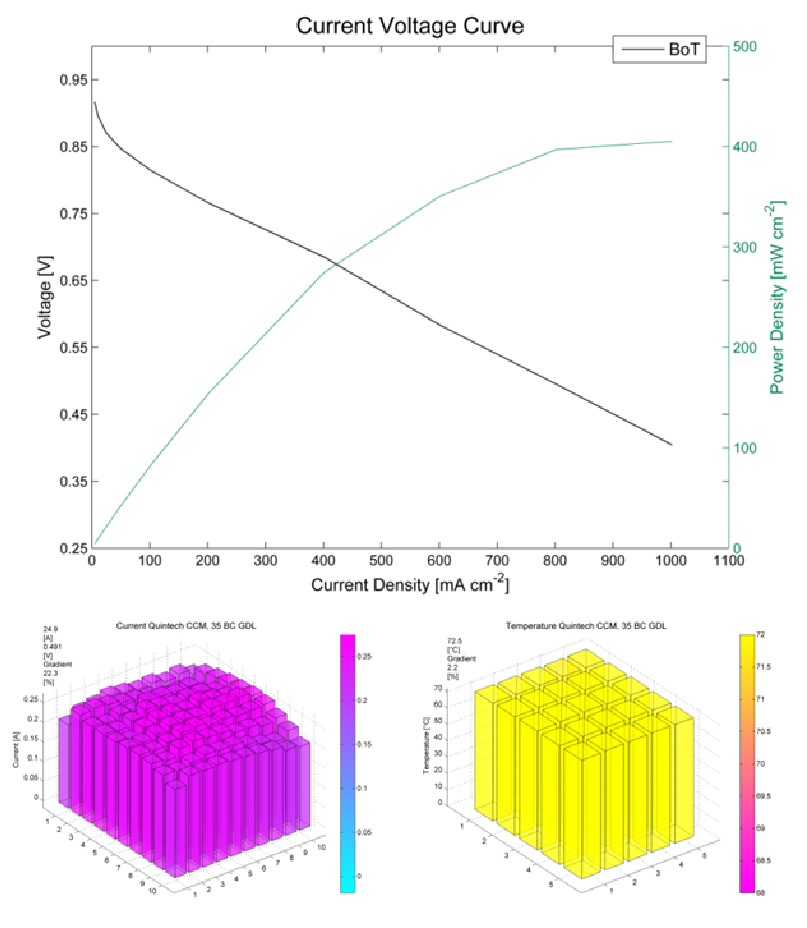IEA AFC Annex 31: Polymer Electrolyte Fuel Cells
Short Description
Polymer electrolyte fuel cells are suitable for various uses. These include the use in devices, such as portable computers and smartphones, as well as for transportation in automotive applications and for decentralized energy supply in combined heat and power units (CHPs) for stationary application.
The research and development activities within task 29 included all aspects of PEFCs (polymer electrolyte fuel cells) and DF-PEFCs (direct fuel polymer electrolyte fuel cells).
New materials for fuel cell stacks
Within the scope of the ongoing project MEA Power, new materials for the high temperature polymer electrolyte fuel cell are developed. The aim is to mitigate the platinum electrocatalyst deactivation due to electrolyte washout.
Therefore, a platinum gold alloy has been used, as phosphate is unable to bind to the latter under acidic conditions. The interaction between platinum and gold weakens the platinum phosphate bond and therefore enhances the catalyst activity.
System, components and balance of plant aspects
This subtask focuses on stack and system development as well as on balance of plant aspects. Membrane-electrode-assemblies were characterized in a single cell with a segmented cathode current collector plate (Figure 1). This allows to measure current and temperature spatially resolved. Thereby, harmful conditions such as gradients or local minima or maxima can be identified.
In addition, the decentralized production of compressed hydrogen from renewable resources using chemical looping in a fixed bed reactor was investigated. It was proven that the conversion of syngas into compressed hydrogen with a high purity is possible under high pressure. In a first step, a purity up to 99.999% was demonstrated.
Direct fuel polymer electrolyte fuel cells
Within the project H2-Speicher, two prototypes were constructed and successfully used for proof-of-concept. This included a pilot plant for the selective release of hydrogen with a PEFC and a direct borohydride fuel cell. A maximum power output of 375 mW was achieved.
The aim of this project was to gain knowledge regarding fuel cell system degradation in order to prolong the lifetime of µCHP systems powered by PEFC and DMFC technology. By the close cooperation with project partners from the industries, exiting systems were investigated and enhanced in order to improve their competitiveness.
Publications
Please find Newsletters, Task-Reports and more on the IEA AFC-Website.
Participants
Austria, Canada, Denmark, Finland, France, Germany, Israel, Italy, Japan, Mexico, South Korea, Sweden, USA
Contact Address
Assoc.Prof. Dr. Viktor Hacker
Graz University of Technology
Institute of Chemical Engineering and Environmental Technology
Fuel Cell Systems Group
Inffeldgasse 25 C, 8010 Graz
Tel.: 0316/873-8780
E-Mail: viktor.hacker@tugraz.at
Web: www.ceet.tugraz.at/fuelcells

